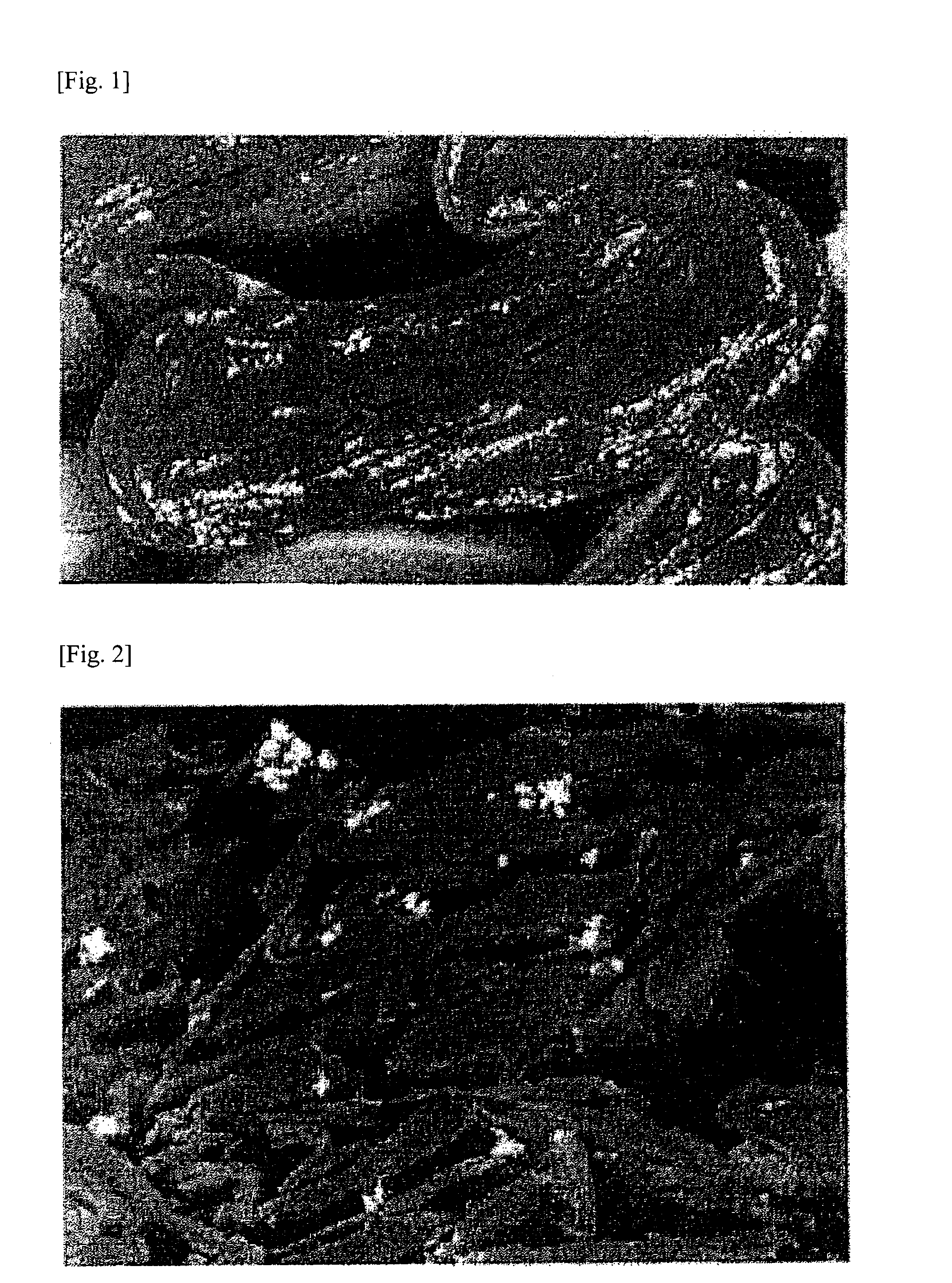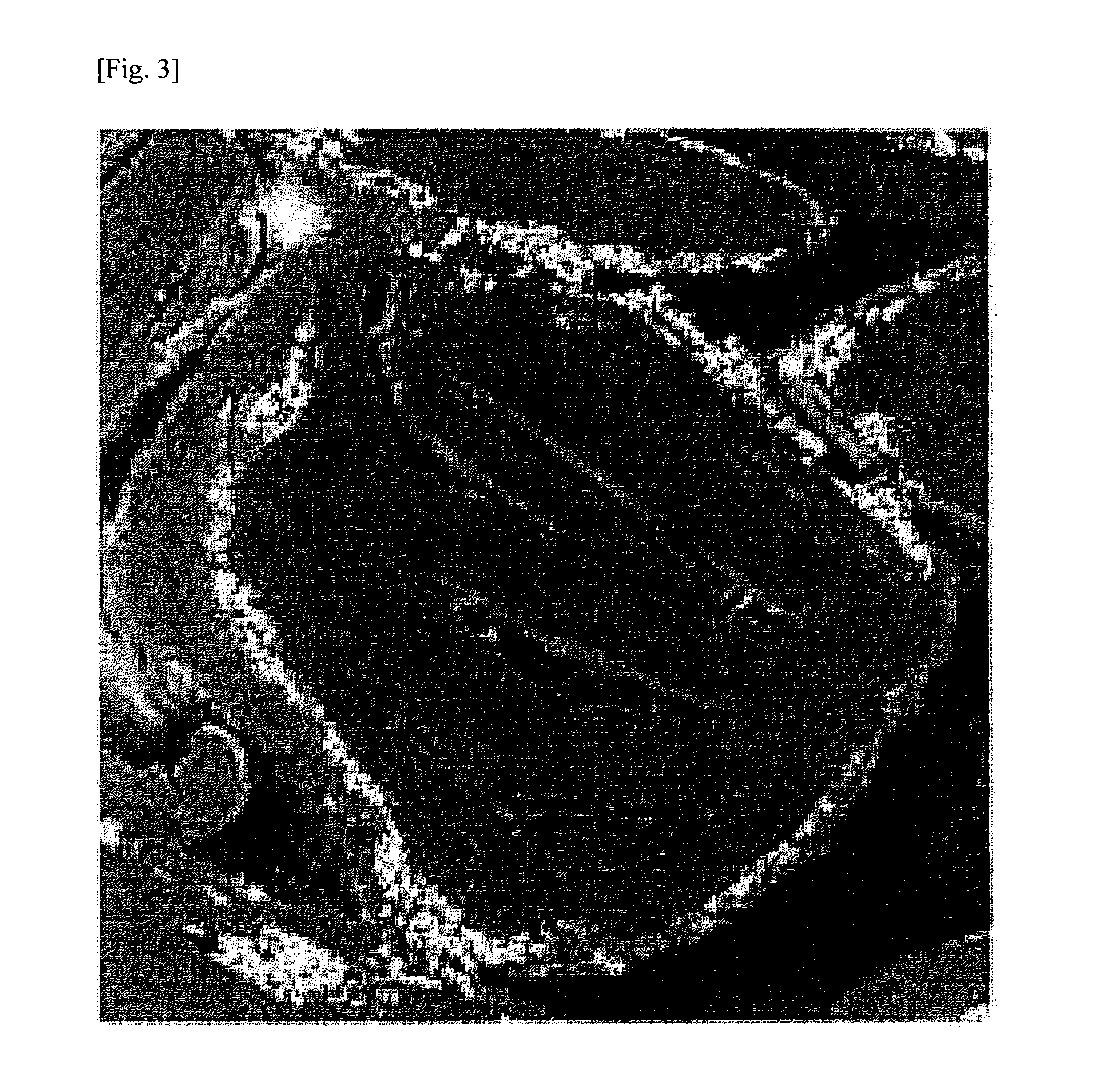Composite graphite particle for nonaqueous-secondary-battery negative electrode, negative electrode for nonaqueous secondary battery, and nonaqueous secondary battery
- Summary
- Abstract
- Description
- Claims
- Application Information
AI Technical Summary
Benefits of technology
Problems solved by technology
Method used
Image
Examples
example 1
Production of Composite Graphite Particle (C)
[0338](Step 1)
[0339]First, polycrystalline Si having an average particle diameter d50 of 30 μm (manufactured by Wako Ltd.), as metallic particle (B), was pulverized with a bead mill (manufactured by Ashizawa Finetech Ltd.) to an average particle diameter d50 of 0.2 μm together with NMP (N-methyl-2-pyrrolidone), thereby preparing an Si slurry (I). Two hundred grams of this Si slurry (I) (solid content, 40%) was added, without being dried, to 750 g of NMP in which 60 g of polyacrylonitrile (burning yield, 37.74%; nitrogen content, 26.4%) had been evenly dissolved as a polymer containing nitrogen element. This mixture was stirred using a mixing stirrer (manufactured by Dalton Co., Ltd.) to thereby mix the Si compound particles with the polyacrylonitrile. Subsequently, 1,000 g of a natural flake graphite (average particle diameter d50, 45 μm) was introduced as a graphite (A) and mixed using the mixing stirrer to obtain a slurry (II) in which ...
example 2
[0358]The same procedure as in Example 1 was conducted, except that the amount of the Si slurry (I) (solid content, 40%) to be mixed was changed to 850 g in order to increase the Si content of the composite graphite particle. The properties of the composite graphite particle (C) obtained and the evaluation of the battery are shown in Table 1.
example 3
[0359]The same procedure as in Example 1 was conducted, except that the amount of the Si slurry (I) (solid content, 40%) to be mixed was changed to 1,200 g in order to increase the Si content of the composite graphite particle. The properties of the composite graphite particle (C) obtained and the evaluation of the battery are shown in Table 1.
PUM
 Login to View More
Login to View More Abstract
Description
Claims
Application Information
 Login to View More
Login to View More - R&D
- Intellectual Property
- Life Sciences
- Materials
- Tech Scout
- Unparalleled Data Quality
- Higher Quality Content
- 60% Fewer Hallucinations
Browse by: Latest US Patents, China's latest patents, Technical Efficacy Thesaurus, Application Domain, Technology Topic, Popular Technical Reports.
© 2025 PatSnap. All rights reserved.Legal|Privacy policy|Modern Slavery Act Transparency Statement|Sitemap|About US| Contact US: help@patsnap.com



